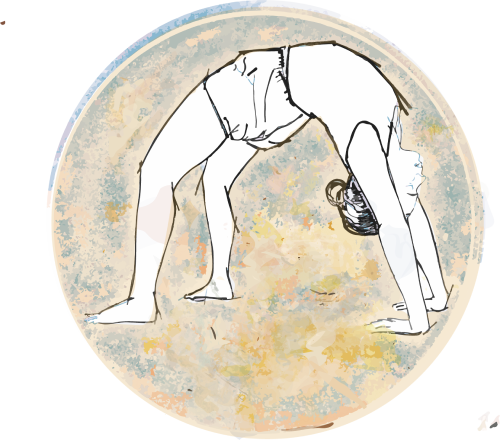Definitions of Yoga
“As a well-cut diamond has many facets, each facet reflecting a different colour of light, so does the word yoga, each facet reflecting a different shade of meaning, and revealing different aspects of the entire range of human endeavor to win inner peace and happiness.” – B.K.S. Iyengar
The exact origin of yoga is difficult to date. References to yoga, and its definitions and interpretations, have consistently appeared in scriptures. Some of these definitions include:
Equanimity is Yoga
Yoga is skillfulness in action
Yoga is a discipline; yoga is restraint of mental fluctuations
Yoga is the restraint of sorrows (those that are existing and those that are yet to come)
The word yoga is derived from the Sanskrit root meaning ‘Yuj’ meaning to bind, join, attach, and yoke.
Yoga is sometimes divided into four paths: Bhakti Mārg, Jñāna Mārg, Karma Mārg and Yoga Mārg (also referred to as Rāja-Yoga Mārg). These paths are not based on hard and fast rules. They are paths to self-realisation that are based on the inherent tendencies of the aspirant. An aspirant who has a tendency to serve others chooses the path of action (Karma Mārg); An aspirant whose heart is full of emotion can attain self realisation through the path of devotion (Bhakti Mārg); the aspirant who has high intellectual capacity treads the path of knowledge (Jñāna Mārg) the meditative and reflective aspirant chooses the path of Yoga (or Rāja Yoga). Patanjali states in the Yoga Sutra (II.1) that Bhakti Mārg, Jñāna Mārg and Karma Mārg are included in Yoga Mārg. Tapas indicates the path of Karma, Svādhyāya indicates the path of Jñāna and Iśvara pranidhāna indicates the path of Bhakti. Expressed another way, each human being is made up of three parts: the arms and legs for action, the head for thinking, and the heart for devotion and surrender. The path of yoga is thus the fountainhead for these paths and finally all three paths merge in to the fourth – yoga.
The Eight-Fold Path of Yoga: Ashtanga Yoga
The credit of collating, systemising, and codifying the entire philosophy of yoga goes to Sage Patanjali, regarded as the codifier of the subject of yoga. Historically, Patanjali may have lived between 500 and 200 B.C. He chose to write on three subjects: grammar, medicine and yoga. The Yoga Sūtra, his culminating work, is his distillation of human knowledge. His 196 aphorisms or sutra’s cover all aspects of life, beginning with a prescribed code of conduct, and ending with man’s vision of his true Self.
The eight limbs/ aspects of Yoga as enumerated by Patanjali are:
- Yama – Ethical disciplines that transcend caste, creed, country, age and time. The five yama are ahimsā, (non-violence), satya(truth), asteya (non-stealing), brahmacharya(continence), and aparigraha (non-coveting)
- Niyama – Rules of conduct for self-purification through individual discipline. The 5 niyama are śaucha (purity), santosa (contentment), tapas (ardour or austerity), svādhyāya (study of Self), Iśvara pranidhāna (dedications to the Lord).
- Āsana – āsana are not merely gymnastic excercises; they are postures that have been evolved over the centuries so as to exercise every muscle, nerve and gland in the body. They secure a fine physique, which is strong and elastic, without being muscle-bound, and they keep the body free from disease. They reduce fatigue and soothe the nerves. But their real importance lie in the way they train and discipline the mind. The yogi conquers the body by the practice of āsana, and makes it a fit vehicle for the spirit. Where doe the body end and the mind begin? Where does the mind end and the spirit begin? They cannot be divided as they are inter-related but different aspects of the same all-pervading consciousness.
- Prānayāma – Prāna means breath, respiration, life, vitality, wind, energy or strength. Āyāma means length, expansion, stretching or restraint. Prānayāma thus connotes extension of breath and its control. This control is over all the functions of breathing, namely: inhalation (pūraka), exhalation (rechaka), and retention (kumbhaka). Prānayāma is the hub around which the hub of life revolves.
“As lions, elephants and tigers are tamed very slowly and cautiously, so should prāna be brought under control very slowly in gradation measured according to one’s capacity and physical limitations. Otherwise it will kill the practitioner.” warns the Hatha Yoga Pradīpika.
- Pratyāhāra – withdrawal and emancipation of the mind from the domination of the senses and exterior objects.
- Dhāranā – When the body has been tempered by āsana, when the mind has been refined by the fire of Prānayāma, and when the senses have been brought under control by Pratyāhāra, the sādhaka reaches this sixth stage. Here he is concentrated wholly on a single point or on a task in which he is completely engrossed.
- Dhyāna – When oil is pored from one vessel to another, one can observe the steady, constant flow. When the flow of concentration is uninterrupted, the state that arises is dhyāna.
- Samādhi – Samādhi is the end of the sādhaka’s quest. At the peak of his meditation, he passes into the state of Samādhi where his body and senses are at rest as if asleep, his faculties of mind and reason are alert as if he is awake, yet he has gone beyond consciousness.
“Yoga is a practical subject. It is a direct and experiential subject rather than a discursive one.”
“Analytical intelligence is easy to come by, but not practical intelligence.”
“Words cannot convey the value of yoga. It has to be experienced.”
Additional Resources:
Journey of Self with Yoga: Senior teacher Manuoso Manas puts the subject of yoga in historical context. the talk starts at 3.30 min.
In order to ensure that these most basic concepts are not coloured by our interpretation, the text in this section is largely derived from publications written by Shri BKS Iyengar, or put out by RIMYI/ other Iyengar Yoga Associations around the world. All copyrights on content are held by the original sources
References for the content in this section:
Light on Yoga – B.K.S. Iyengar, 1966, Introduction
Light on Astanga Yoga, B.K.S Iyengar, 2008, page 15-19
Light on Yoga Sutras of Patanjali, B. K. S. Iyengar, 1993, page 1
The Path of Yoga, page 50, Yogadhara, 2000, published by the Light on Yoga Research Trust
“What is Yoga?”, B.K.S. Iyengar, Yoga Rahasya, Vol 18, No. 3, 2011
Tree of Yoga – B.K.S. Iyengar, Hsrper Collins Publishers in India, 2009, Chapter Patenjali’s Yoga Sutras; page 113
Basic Guidelines for Teachers of Yoga – B.K.S. Iyengar, Geeta Iyengar; published by YOG; 2003; page 80


